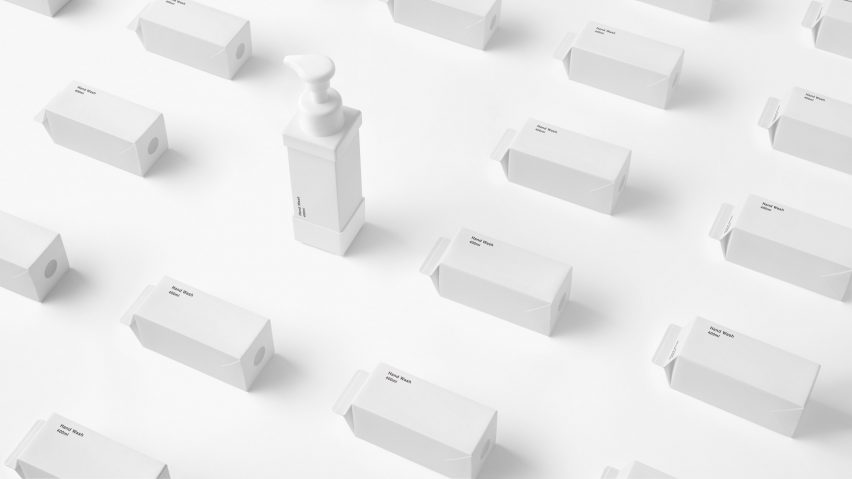Japanese studio Nendo has designed Carton + Pump, an alternative to single-use plastic soap dispensers in the form of a recyclable paper carton that can be switched out and replaced.
Led by designer and architect Oki Sato, the studio's project aims to address both the potential hygiene issues of reusing soap dispensers while reducing the number of plastic containers that end up in landfills around the world.
Nendo plans to launch Carton + Pump by 2022. The soap-filled paper pouches resemble a milk carton and work with a reusable dispenser pump.
The paper carton can be turned upside-down and placed into a cap so that it stands upright. Then, like a straw for a portable juice pouch, the sharp end of the dispenser pump can pierce through its underside.
"The top and bottom covers distribute the pressure of the pump being pressed repeatedly, making the carton less likely to collapse, and also preventing it from getting soft and mouldy in a washroom," said Nendo.
Replaceable paper cartons would prevent potential contamination. Studies have discovered that refillable soap dispensers can become a breeding ground for certain bacteria, defeating the object of hand-washing entirely.
As the carton sits upside-down, residual soap will collect in the centre of the carton's gable-top and be more easily caught by its dispenser pump than a standard flat-bottomed soap dispenser.
Unlike many existing plastic soap dispensers, Carton + Pump's box shape will mean that the dispensers can be stored easily.
The product will come in two pump and container sizes that will hold 250 or 400 millilitres of liquid or foam soap.
Other environmentally-focused soap designs include Júlia Roca Vera's cosmetic range made from fruit that was discarded purely for aesthetic reasons and Forgo, a mix-it-yourself soap brand by Form Us With Love that avoids plastic packaging.
Nendo is a Tokyo-based global design firm founded by Oki Sato in 2002. The company recently created build-your-own football kits for children living in low-income communities, and also transformed the entirety of Japan Airlines' in-flight amenity sets using origami paper cranes as a design reference.
Photography is by Akihiro Yoshida.

